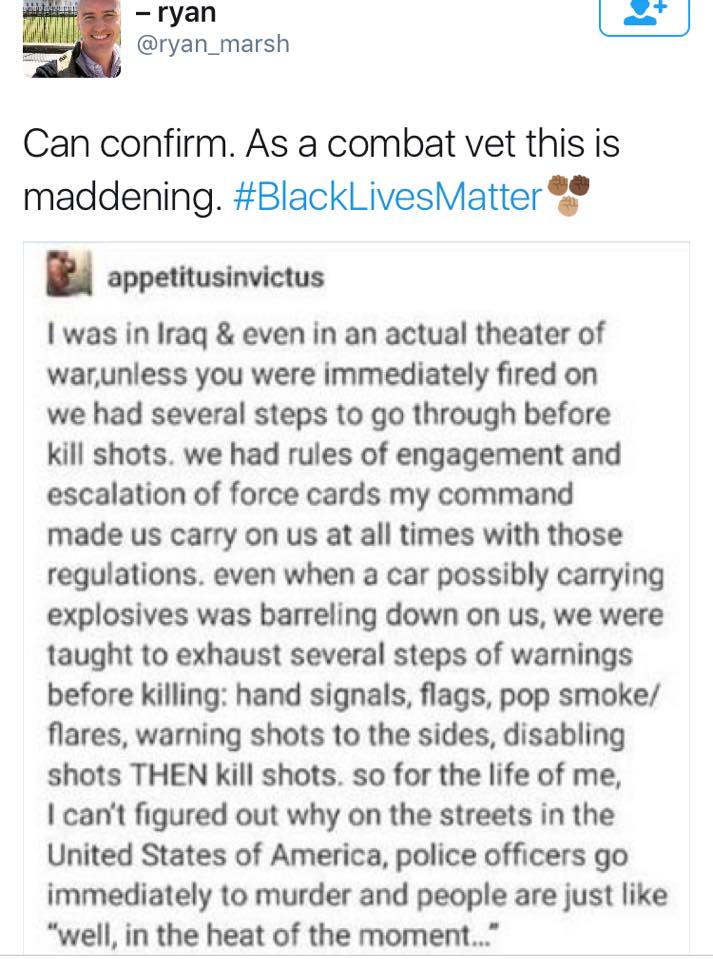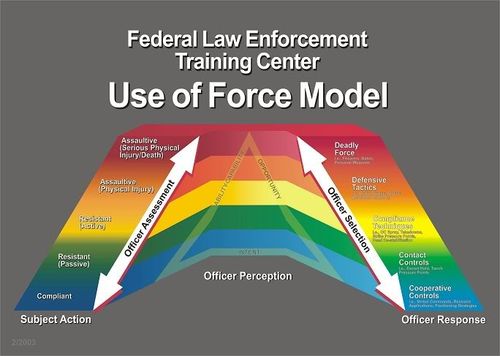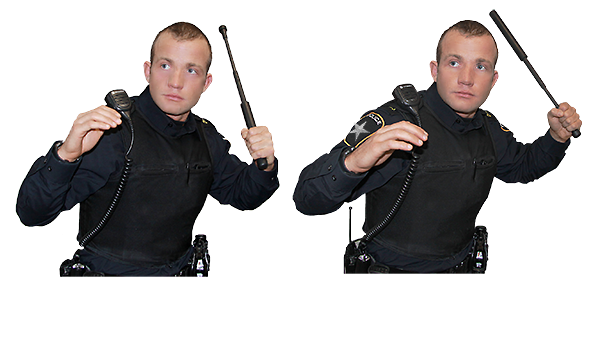I’ve been meaning to get back to blogging more often and getting new content on the website.
I’ve been working on my third book and working full time, so the time hasn’t really presented itself.
However, in recent weeks with with a recent shooting in Tulsa, Oklahoma and another in Charlotte, North Carolina, along with NFL quarterback Colin Kaepernick refusing to stand for the National Anthem in support of the Black Lives Matter movement, the police use of force continuum has become a popular topic of discussion, particularly among those who know next to nothing about it yet feel the need to ignorantly pontificate.
This particular example has me seeing red for reasons that should become obvious rather quickly:

For those of you who do not know, I deployed as an 11B1O (that’s your basic leg infantryman, for those not fluent in Army MOS) with the 4th Infantry Division to Baghdad, Iraq, between March 2008 and March 2009.

By the time I had arrived in country, the rules of engagement/escalation of force (henceforth referred to as ROE/EOF) had already been extremely curtailed in comparison to the days of the initial invasion. Men I served with told me multiple stories of how in the early days of Operation: IRAQI FREEDOM, the ROE/EOF essentially boiled down to: if they’re a military-aged male and look like a threat, shoot them.
I knew my ROE/EOF before I even stepped foot in Iraq. They were ingrained into my brain so I would know when to shoot and when not to shoot. To this day, over seven years after returning, I can recite my ROE/EOF from memory:
–SHOUT: Yell commands at the threat. That usually amounts to screaming, “OKAF!”, the Arabic word for “STOP!”
-SHOW: This amounts to showing your weapon at the high ready, or pointing your weapon at the threat.
-SHOVE (where applicable): If you are in close proximity with the threat and they continued to advance, you give them a solid shove and continue voice commands and show of force. This is pretty self-explanatory.
-SHOOT TO WARN: If all the above has not worked, you fire your weapon in a (relatively) safe direction in order to deter the threat.
-SHOOT TO DISABLE (where applicable): This step applies to vehicles. If a vehicle is approaching your position and they fail to heed warning shots, you place fire on their engine block to disable the vehicle.
-SHOOT TO KILL: Pretty self-explanatory.
This part, the original meme maker got right.
Let’s talk about where they got it wrong.
RULES OF ENGAGEMENT ARE NOT BY THE NUMBERS
Either the original meme poster was not explained how ROE/EOF works, or they are lying through their teeth, because the assertion that one had to follow every single step before resorting to lethal force is a bald-faced lie.
Let’s take the situation the poster described: a vehicle barreling down on my position at a high rate of speed.
If we take that at face value, yes, then you have to use every single step in the rules of engagement before reaching lethal force.
However, if I look through my optic and see the driver is wearing a suicide vest, or I notice the vehicle is riding really low (a tell-tale sign that the vehicle is loaded with explosives) I DO NOT have to go through all the steps and risk that vehicle placing my men in the lethal blast radius before engaging it. I see that, I am free to engage it as far out as possible. In fact, I am ENCOURAGED to engage it as far out as possible to protect the lives of my mates.
In a perfect ROE/EOF situation, the threat is steadily escalating and leading to lethal force if the threat refuses to deescalate.
As anyone will tell you who has actually been over there and outside the wire, there is no such thing as a perfect ROE/EOF situation.

Let’s take another example.
Let’s say I’m leading my fireteam on a foot patrol through a neighborhood known to harbor Jayish al-Mahdi (Mahdi Militia, currently known as the Peace Companies) militants. I see a militant round a corner quick and start to bring up his rifle.
According to the original poster, I would have to wait to take incoming fire before I could shoot him, or would have to attempt to sprint up to him, shout at him, shove him, and then fire warning shots before I could shoot him.
FALSE.
I can articulate a threat (pointing a rifle in my general direction) and I am free to skip to the appropriate level of force (shoot to kill).
There is absolutely NOTHING that says you must follow every single step of the ROE/EOF in sequence, and anybody who suggests that has never worked in a situation where they would actively have to use the ROE/EOF.
And one other item: you do not have to leave the wire or see actual combat to be titled a “combat veteran.”
I’ve seen official Army documents where all somebody did was stay on a forward operating base (FOB) all tour and do paperwork, and at the end, they were declared “combat veterans.”
Most soldiers I know shy away from that title unless they have a Combat Infantryman’s Badge, a Combat Medic’s Badge, or a Combat Action Badge. But, this is talking in support of Black Lives Matter. It wouldn’t be the first time that a supporter of that movement blatantly lied to forward their agenda.
I could be wrong. Maybe this happens to be an extremely ignorant person who also happens to have a CIB. I severely doubt it, however.
Now that that’s addressed, let’s put a nail in this coffin and debunk the final assertion.
THE USE OF FORCE CONTINUUM

Remember in the ROE/EOF how after shouting, the immediate next step was to show force by raising your weapon? And how two steps after that, the shooting started?
Yeah, that’s completely absent in the law enforcement use of force continuum (henceforth referred to as UOFC).
Pictured is the UOFC taught to federal law enforcement agencies. This model has effectively been universally adopted at the state and local levels, as well.
To sum up, the officer perceives the subject’s level of resistance, and then matches that resistance with the minimum force necessary to control the situation.
If the subject is compliant, then verbal judo is the name of the game. Talking. The gift of gab.

If the subject is not responding to verbal commands, then contact controls are appropriate. This amounts to psychological manipulation, pressure point manipulation, and escort holds. These are soft-hand techniques mixed with additional verbal judo.

If the subject actively begins resisting, compliance control techniques are employed. Pressure points, joint manipulation, takedowns, and OC spray are examples of compliance control.
If the subject raises the level of resistance to assaultive, defense tactics are employed. These include baton strikes, taser, close-handed strikes, and additional OC employment.

The final level of the UOFC is deadly force. This is only to be employed to defend themselves or others from death or grievous bodily harm.

Two noteworthy points:
-nowhere does it say that the suspect must be armed. That is usually the case, but not always. Disparity of force (size difference and numbers difference) is a major factor. A male LEO who is my size (6’0″ and 285 lbs) is going to have less leeway to employ lethal force than a female LEO who is 5’4″ and 135 lbs.
-nowhere does it say that an officer must follow those steps in sequence. In fact, it says the opposite: the level of force employed is directly dependent upon the level of resistance the subject presents.
That second point, about the UOFC not needing to be followed in sequence, as well as the point about the employment of the minimum amount of force necessary to control the situation, are about all it has in common with ROE/EOF.
Weapons come out much sooner in the ROE/EOF than in UOFC.
Warning shots are authorized in war zones since the military has a more relaxed policy on collateral damage, whereas the Black Lives Matter/Cop Block circles would actually have legitimate grievances if police officers threw around warning shots with wanton disregard.
The only stated less-than-lethal options in ROE/EOF are to shout and shove people, whereas law enforcement are afforded a variety of LTL options.
Contrary to popular belief, the vast majority of the roughly 63 MILLION police-public contacts are handled without use of lethal force. According to this Washington Post article, in 2011 (the most recent year cited for number of police-public contacts) there were roughly 1,146 officer-involved shootings (0.00181904761% of all contacts), of which only 607 were lethal (0.00096349206% of all police-public contacts).
CONCLUSION
The original meme is extremely misleading and disingenuous. It gives the public a false sense of being informed on UOFC, when in reality, that person was not even informed on how ROE/EOF works.
Labeling one’s self a “combat veteran” does not make them an expert on ROE/EOF or UOFC, as clearly evidenced by the facts that shatter the original poster’s assertions.
Some civilians might say that they can’t be bothered to research statistics, or the fluidity of violent situations, or even keep up with the acronyms.
That’s fine. You’re under no obligation to do so.
However, failure to do so when entering this discussion will only result in your being labeled ignorant.
The facts are out there. Do the research. If you can’t do the research, stay out of the discussion and allow the informed individuals to discuss the topic at hand.
Featured image courtesy of nbcphiladelphia.com
You are wrong I am A Veteran also the point is we have more discipline we know when to shoot and not to shoot and we have to do it and the heat of the battle that bunch of educated Bs you just wrote does not seem like you been there and done it.If we fuck up we get court marshaled so shut your educated up
LikeLiked by 1 person
I smell a pogue…
LikeLike
William Jordan you wouldn’t know what being in combat is like if it slapped you across the face.
LikeLiked by 1 person
You’re completely full of shit and likely an indecisive asshole that fired from the back after leaders started pulling the trigger at the front. Coward.
LikeLike
Also, *court-martialed
LikeLike
In the two police academies I went to, we were taught “force options” rather than “use of force continuum”, specifically to dispel the notion that officers were required to follow every step before resorting to lethal force.
LikeLiked by 1 person
They are not enemy combatants. They are American citizens. Keep your oath.
LikeLike
My oath is to defend against all enemies of the Constitution, foreign and domestic. People seem to forget violent criminals as an enemy of the Constitution. One who would wish to deprive you of your ability to exercise your Constitutional rights would certainly qualify, and LEOs take that same oath.
LikeLiked by 1 person
When training VBSS teams, Security Reaction Teams and Civilian DoD ATFP assets, we ALWAYS stress that the UOFC is not a LADDER. They are options, tools in the tool box for you to deploy when necessary. If there were a nail that needed to be driven into a piece of wood, would you try sand paper, a wrench, a screw driver and then get around to using the hammer, only when all other options are exhausted? Of course not. You meet/exceed the force with which you are met. Public safety and the safety of your team is TOP priority. In fact, in DoD self defense and the defense of others is the most commonly cited reason for UOF when under investigation. We also have a Deadly Force Triangle. Opportunity, Capability and Intent. The Tango’s size, anything on his person that may be used as a weapon, and the ability to use that weapon effectively all come in to play. Engage center mass at the target provided when all three legs of the triangle are met. Even in Maritime Interdiction work, we never HAVE to use every level of the Seaward Continuum of Force. If there is an inherent threat, by all means get that damn M2 up and engage the threat! Maybe the above individuals had terrible training and they truly believe their perception is correct… but as a prior instructor and current ATO, I can profess they are indeed wrong and I would be weary to authorize their use of a firearm on my team.
LikeLiked by 1 person